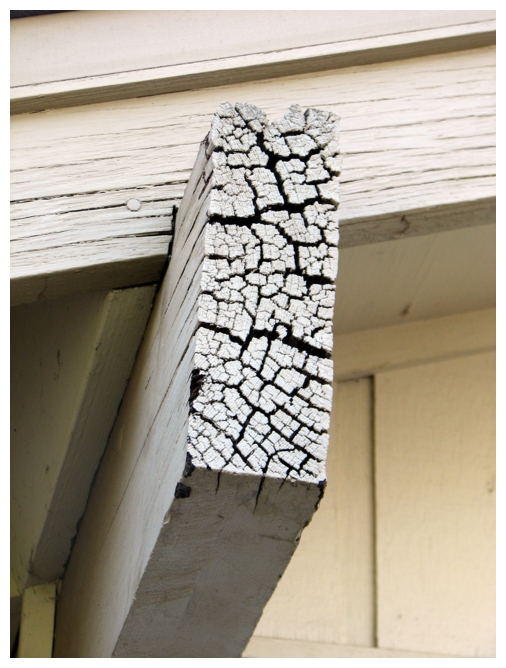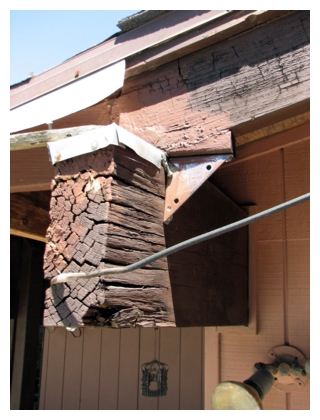Detecting Roof Beam Decay
Determining the presence of decay is important, but the search can be frustrating, and the situation confounding. Dry rot may not even be outwardly visible. Numerous applications of fillers, caulking, and/or paint over the years can mask underlying wood decay. But you can bet, that the lack of regular maintenance using these same products, will guarantee creating the very problem you're trying to prevent. Go figure.
It is a good idea to begin regular inspections of your roof beams (every other year is a good place to start). This will allow for the discovery of deterioration problems before they become severe. Consider having a qualified licensed contractor perform these inspections. Either way, there are some telltale signs to watch for. Old filler or caulking in cracks that has become dislodged or separated presents a risk of water penetration. Discoloration, staining, or peeling of the existing paint coating can be indications of moisture problems. Fungus growth can appear on the beam surface, if there is enough moisture. Beam-ends that are spongy or crumbling, have unnatural voids, or have taken on a marked distorted shape, are exhibiting symptoms of advanced decay.
Below are examples of roof beam decay. You can click on any photo to enlarge in a new window.
«Back Next »
    
    
These last photos are of beams with so much hidden rot, they had to be entirely removed & replaced.


«Back Next »
Top of Page |